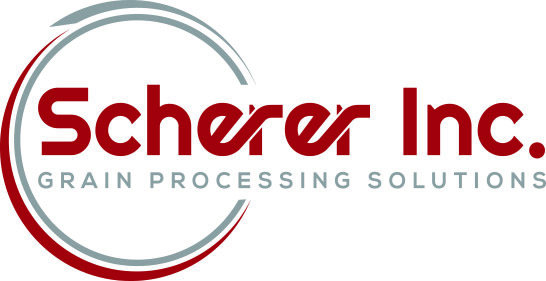Myth No. 1: Pregnancy diagnosis is a waste of time
I have one question for any cattleman considering heeding this advice. Would you put fuel in a pickup with a hole in its fuel tank? Of course not. But if we don’t discern open from pregnant cows, then we are providing energy resources (fuel), time and money in support of a cow that will yield zero return to our bottom line. That’s not smart.
According to a number of published beef cattle extension budgets, the annual variable costs for a cow-calf pair is approximately $500 to $600; add the fixed costs and that number doubles. Undetected open cows remaining in the herd carry this, now sunk, variable cost to their subsequent production, which means their next five calves incur over $100 each in additional variable cost, which might be all the profit.
That’s assuming she has five more calves, which is doubtful at best. It’s more likely that she will fail to become pregnant before yielding five more calves and lose even more money. The three generally practiced pregnancy diagnosis methods – rectal palpation, ultrasound and blood test – range from $3 to $5 per head or $300 to $500 for a 100-head herd.
Not finding 10 open cows in a 100-head herd until next calving season costs the ranch enterprise $5,000. I don’t consider a 10-to-1 return on investment a waste of time.
Myth No. 2: Give open cows a second chance
Of the four choices – retaining heifers from the herd, purchasing bred cows, purchasing bred heifers or keeping an open cow – the latter is the least preferred in most economic production scenarios and no higher than second in any given scenario.
Only in the highly improbable scenario of when cull cow prices are less than $36 per hundredweight (cwt) and more than 30 percent of the cow herd is open did keeping the open cow even rank second. Replacing the open cow with a heifer from the herd is the best economic option in any given scenario.
Bottom line: Open cows leave the ranch. How and in what condition we sell them is the only question left to answer, but that’s another article.
Myth No. 3: Salt is the only supplemental mineral your cows need
Salt, quite likely, has cost cattlemen more money than any other supplemental mineral. That’s not because cattle don’t need sodium and chloride in the diet … they do. What’s costing cattlemen money is believing these two elements are all the supplemental mineral cows need, thus depriving cattle from receiving several essential trace minerals known to be deficient in the diet and which negatively impact their productivity and lower profitability.
Supplemental salt, discovered to provide benefits to beef cattle circa 1800, was believed the only mineral supplement that needed to be added to a mature cow’s diet. Continuing to believe that salt is the only supplemental mineral cows need means we haven’t learned anything about beef cow nutrition in over 130 years. That is not the case, we’ve learned a great deal.
First, we’ve learned that beef cows have requirements for many trace elements and that providing these minerals improves health and productivity and provides a positive net financial return.
Second, after analyzing tens of thousands of forage samples from all over the U.S., we have learned that when consumed at expected dry matter levels as defined in the 2000 National Research Council Requirements for Beef Cattle, most grazed forages are deficient in copper, zinc, cobalt, iodine and, in all but a few select geographies, selenium – and these fail to meet a beef cow’s requirements.
Those deficiencies are greatest for lactating and pregnant beef cows in their last trimester.
Lastly, trying to correct trace mineral deficiencies with trace mineral salt blocks is more advice you shouldn’t take. The concentration of microminerals in “trace mineral” salt is too low given the amount of salt a cow will normally consume; they shouldn’t be the sole source of trace minerals offered to cows.
Sulfur salt blocks – the yellow blocks we see all too often in pastures – have little benefit above providing sodium and chloride. There is no scientific evidence that even suggests sulfur salt blocks guard against various external parasites, which is how they were originally sold years ago.
In fact, excessive sulfur in the diet can reduce the absorption of some essential trace minerals, rendering them unavailable to the cow.
One final related salt myth: Although a factor in causing grass tetany (hypomagnesia), salt supplementation alone does not prevent severe conditions that result in outbreaks. Those conditions require a balance of macrominerals (calcium, magnesium and sodium) in a supplement containing no added potassium. Excessive potassium in the forage, inhibiting magnesium absorption, causes grass tetany.
Myth No. 4: Cows have ‘nutritional wisdom;’ if they’re not eating mineral, they probably don’t need it
The only “nutritional wisdom” consistently demonstrated by cows is when it comes to salt. Cows will aggressively pursue salt as they have a requirement for sodium, which is nearly totally devoid in most forages. Of course there are exceptions. Forages growing on alkali flats or near saltwater contain high enough sodium concentrations that cattle will avoid consuming additional salt regardless of the source.
This indulgence/avoidance behavior is often described as nutritional wisdom. The problem is incorrectly extrapolating that behavior to every other mineral element required by the cow. The nutritional wisdom myth is further perpetuated by a condition known as pica. Merriam-Webster’s medical dictionary defines pica as:
“an abnormal craving for and eating of substances (as chalk, ashes or bones) not normally eaten that occurs in nutritional deficiency states (as aphosphorosis) in humans or animals.”
In cattle, pica manifests itself with the eating of dirt, licking or chewing on bones, or consuming feedstuffs they wouldn’t normally eat. Pica in cattle is a nutritional disorder brought on by severe, production-inhibiting deficiencies. Cattle not responding to deficiencies until they are severe enough to negatively impact productivity is not my definition of wisdom.
Our best defense in preventing production-inhibiting mineral deficiencies is a good offense. The real wisdom is providing a balanced mineral supplement formulated to correct deficiencies that our best science has determined exist. Don’t leave ranch profitability to the “wisdom” of a cow.
Myth No. 5: There’s no need to supplement grazed forage
Cow-calf operations that manage their production calendar – when the cows begin calving – to align with forage quality and availability are well ahead of the game in terms of needing to supplement. Cows that calve near or during early forage growth will need little supplement except trace minerals as stated above; essential trace minerals are most always deficient – even in the highest-quality forages – so we need to offer them year-round.
Production calendar alignment ensures that when the cow’s nutrient requirements are highest, she has the highest-quality forage available to her. However, not all forages are created equal. Warm-season forages might require phosphorus supplementation.
Early growth, cool-season forages might require calcium, magnesium and sodium supplementation to prevent grass tetany. Periodic forage analyses to understand forage nutrients are always valuable when developing a supplementation strategy.
Production calendars indicate weaning calves after forage matures, but prior to full dormancy. After weaning, the cow’s nutrient requirements drop to levels that only require supplementation other than mineral if the crude protein content of mature or dormant forage drops below 8 percent on a dry matter basis. Again, test your dormant forage to know.
Protein supplementation during this time pays big dividends by simultaneously increasing the cow’s forage intake and forage digestibility, thus making more energy available to the cow. This is critical, because soon the cow will enter her third trimester of pregnancy and the increasing nutrient requirements of significant fetal growth.
Forages and conditions differ throughout the country, but the principles remain the same. Cow productivity and ranch profitability will generally always benefit from strategically supplementing the forage diet.
Cow-calf production in the U.S. is diverse and producers’ goals are going to differ from one ranch to another, but there are some foundational truths – brought to us by a continuous evolution of science and research that just can’t be overlooked. ![]()
References omitted but are available upon request. Click here to email an editor.

-
Bryan McMurry
- Cargill Animal Nutrition
PHOTO: Research suggests thinking twice before embracing these five myths. Staff photo.











